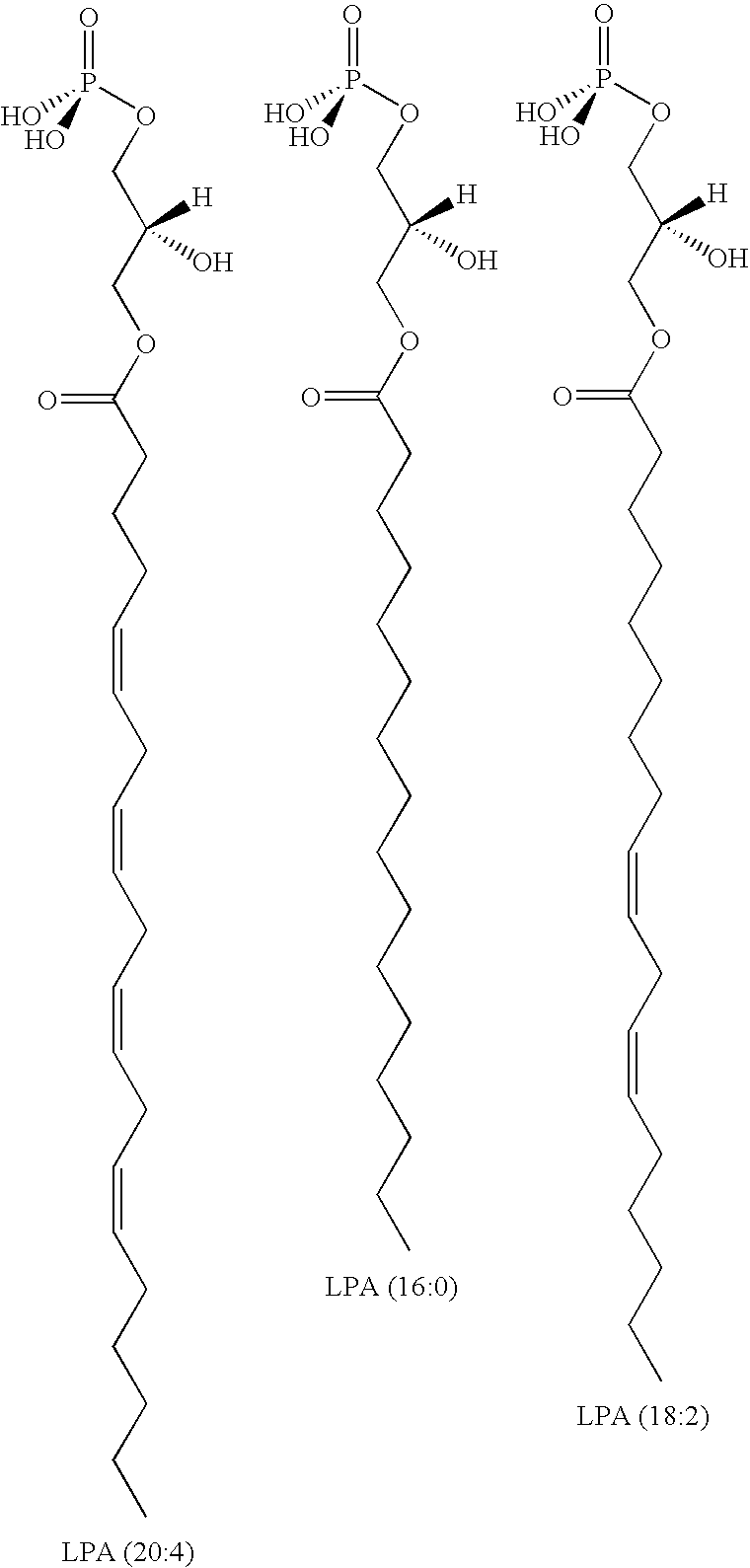Methods for decreasing immune response and treating immune conditions
a technology of immune response and treatment, applied in the field of immune response reduction, can solve the problems of abnormal growth of an organ, serious and potentially deadly consequences, and organ function changes, so as to reduce the effective concentration of bioactive lipids and reduce the immune response
- Summary
- Abstract
- Description
- Claims
- Application Information
AI Technical Summary
Problems solved by technology
Method used
Image
Examples
example 1
Effect of Agents that Decrease the Effective Concentration of Bioactive Lipids on Lymphopenia
[0174]As is summarized in Tables 1 and 2, a 28-day toxicology study with murine monoclonal antibody LT1002 (SPHINGOMAB) was performed at doses of 0, 30, 75 and 200 mg / kg. As is shown in data tables 1-7 below, there was a dose-related decline of lymphocytes at all dose levels and of basophils at the highest dose. This decline was reflected in an increase in % neutrophils, % monocytes and % reticulocytes and a parallel decrease in % lymphocytes. This decrease in circulating neutrophils parallels the effect seen with FTY720, a small molecule sphingosine analog, which is a novel immunosuppressive drug that acts by altering lymphocyte trafficking, resulting in peripheral blood lymphopenia.
TABLE 128-Day General Toxicology Study Design28-Day General Toxicology StudyTest ArticleLT1002SpeciesC57Bl mouseNumber of Animals10 / sex / groupDose0, 30, 75 & 200 mg / kgRoute of Administrationiv Bolus by tail vein ...
example 2
28-Day Toxicology Study In Mice With Anti-S1P Monoclonal Antibody—Effect on Spleen
[0175]A 28-day study of LT1002 in mice performed by LAB Preclinical (Study 1005-2615), in which forty organs and the site of injection (tail), were evaluated for gross pathology in all Control and High Dose Level (Group 4; 200 mg / kg / day) animals. LT1002 is the murine version of LT1009, Lpath's anti-S1P monoclonal antibody.
[0176]Organs evaluated included adrenals, aorta (thoracic), brain (cerebral cortex, midbrain, cerebellum and medulla), cecum, colon, epididymides, esophagus, eyes, femur with marrow, gallbladder, heart, kidneys, liver (2 lobes), lungs with bronchi, lymph nodes (mandibular and mesenteric), mammary glands (inguinal), optic nerves, ovaries, pancreas, pituitary, prostate, rectum, salivary glands (mandibular), sciatic nerve, seminal vesicles, skeletal muscle (thigh), ski / subcutis (inguinal), small intestines (duodenum, ileum and jejunum), spinal cord (cervical, lumbar and thoracic) spleen,...
example 3
Effect of Agents that Decrease the Effective Concentration of Bioactive Lipids on Lymphocyte Trafficking
[0182]The S1P signaling inhibitor FTY720 is believed to act in an immunosuppressive manner by altering lymphocyte trafficking / homing patterns and acceleration of lymphocyte homing. Chiba et al., (1998) J. Immunol. 160: 5037. The effect of anti-S1P antibody on lymphocyte trafficking is also examined, essentially as in published methods. Schwab et al., (2005) Science 309: 1735-1739.
[0183]Mice are treated with murine S1P monoclonal antibody or an isotype matched control monoclonal antibody. Treatments consist of intravenous injection of antibody diluted into 200-300 μL of normal saline. Animals are sacrificed at varying times after antibody administration. Lymphocyte counts are performed in lymph nodes, spleen, thymus, blood and lymph. Antibody inhibition of S1P causes a decrease in circulating lymphocytes (i.e., lymphopenia) and a corresponding increase in lymphocytes in lymphoid or...
PUM
| Property | Measurement | Unit |
|---|---|---|
| molecular weight | aaaaa | aaaaa |
| molecular weight | aaaaa | aaaaa |
| molecular weight | aaaaa | aaaaa |
Abstract
Description
Claims
Application Information
 Login to View More
Login to View More - R&D
- Intellectual Property
- Life Sciences
- Materials
- Tech Scout
- Unparalleled Data Quality
- Higher Quality Content
- 60% Fewer Hallucinations
Browse by: Latest US Patents, China's latest patents, Technical Efficacy Thesaurus, Application Domain, Technology Topic, Popular Technical Reports.
© 2025 PatSnap. All rights reserved.Legal|Privacy policy|Modern Slavery Act Transparency Statement|Sitemap|About US| Contact US: help@patsnap.com


